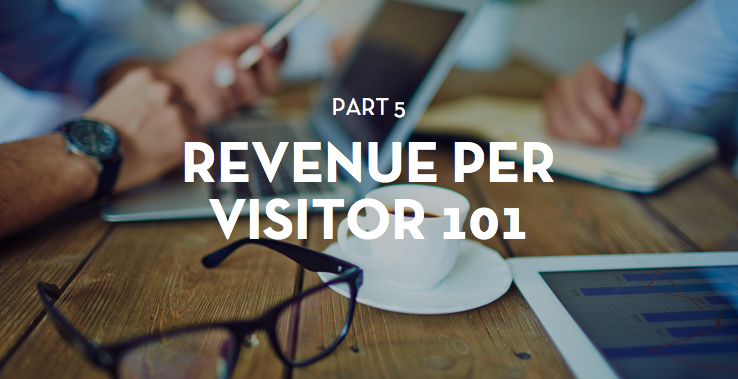
9 ways to increase your store's revenue per visitor
Tracking your metrics can be dizzying if you’re a first-time merchant. With so much data available—AOV, CAC, LTV, RPC, and so on—it’s easy to get buried under stacks of reports and lose sight of what’s really important.
The holidays are even trickier for tracking the health and performance of your store, as you’re probably ramping up promotions and pulling in 50-100 percent more revenue compared to the rest of the year. If you’re monitoring Conversion Rate (CR) and Average Order Value (AOV), two of the most popular ecommerce metrics, you might actually see both dip during the holidays due to discounted prices and increased traffic.
Fortunately, there’s another metric that paints a simple but accurate picture of where your business is at and where it’s going. It’s called Revenue Per Visitor (RPV) and gives you all the insights that CR and AOV alone don’t tell. In this fifth part of our Holiday Seller's Guide, we’ll explain what RPV is, why it’s your best bet for tracking performance in November and December, and some tips for how to increase it.
RPV 101
Revenue Per Visitor (sometimes called Value Per Visitor) tells you simply how much revenue each unique visitor is driving to your store. For a given period of time:
RPV = Total Revenue ÷ Total Unique Visitors
A cool thing about RPV is that it’s also a composite metric, which you can get by multiplying AOV and CR. While a higher AOV and higher CR generally add up to higher revenues, lowering those metrics doesn’t necessarily mean lowering your revenues. The holidays are a prime example of a time when product discounting, coupled with an influx of traffic, is likely to drive down AOV and/or CR, all while total revenues steadily increase. This can cause measurement error, and may also hide the fact that a particular channel is delivering poor-quality traffic.
What RPV does is help you see the bigger picture—something that's especially important during the high-stakes holiday season, when it’s easy to hit the panic button. By considering RPV along with some of the more common metrics, you’ll be able to get a more accurate snapshot of how your store is doing now, how your conversion rate is sitting relative to an increase in traffic, and whether your AOV is holding steady despite an increase in conversion rate.
At a time when you might be too busy dig into a plethora of different measurements, RPV is a glance-able metric you can keep an eye on each day. Doing so can help you quickly spot troubles in promotions, become aware of costly, poor-quality traffic, and get an early heads-up on underperforming products.
Tips for increasing your RPV
There are essentially three ways of increasing your RPV: get more people to buy from you (ie. improve your conversion rate), get people to buy more from you (ie. increase your average order value), or improve the targeting of your traffic acquisition tactics (get more people to your site who are likely to buy, through targeted advertising or other methods). Boost any of these and your RPV will surge; boost all of them and your RPV will soar. Isn’t math great?
With that, here are nine ideas to help you convert more customers, sell more product, and have a happier, upward-trending holiday season.
Build value through upsells and add-ons
Upselling has been around as long as selling. Why? Because no matter what industry you’re in, it’s a sales tactic that works.
According to sales guru Jeffrey Gitomer, it’s also one that has the power to sweeten the deal for both the buyer and the seller. When asked by a reader how they could upsell him on a credit card upgrade that was more expensive than the one he currently used, Gitomer’s answer was simple: “Tell me how I win. When I win, you win.”

If you can make the customer feel like they’re winning—by offering them an upgrade at a bargain price or a product that’s complementary to one they’re already purchasing—then you’re sure to walk away feeling victorious as well.
Give things away for free and turn a profit
“Free” has to be one of the most powerful words in the English language. Everybody loves free. In fact, according to an MIT study, we love it so much that we will typically select a “free” item over a better-quality item that costs a small price (an overwhelming majority of those surveyed preferred a free Hershey’s Kiss to a 13-cent Lindt truffle).
Along the same lines, when Amazon introduced “free shipping” to virtually every country in Europe, orders skyrocketed. In France, the only country that didn't receive free shipping, Amazon charged a single franc, about 20 cents—and the dial barely moved.

The takeaway from both examples is that “free” is more powerful than rational cost-benefit analysis would suggest. If you want to increase your RPV, harness the power of “free.” Set minimum order amounts for things like free shipping, coupons or complimentary gifts. Offer customers who spend $100 a coupon for credit towards their next purchase (enticing them to increase their order now and come back to buy more soon).
Use bundling to reduce pain points
Purchasing can be a painful experience for some people. In fact, according to behavioural economist George Loewenstein, all consumers prefer to complete their purchase in one fell swoop if it means they can avoid making multiple purchases. His research shows that people are keen to pay for bundles rather than seeking out individual products not because it’s less hassle but because it results in fewer purchase pain points.

If you want customers to check out with more items—and less psychological suffering—try creating some product bundles that cost slightly less than if the items were purchased individually. You can also let customers build their own bundle with “Buy more, save more” campaigns like the one pictured above.
Win new customers with a referral campaign
People trust their friends more than any other source. According to McKinsey & Company, word-of-mouth is the primary factor behind 20 to 50 percent of all purchasing decisions, and it’s the only factor that ranks among the three biggest consumer influencers at every step of the consumer’s journey. As John Cooper Clarke put it, “Word-of-mouth is a force of nature.”
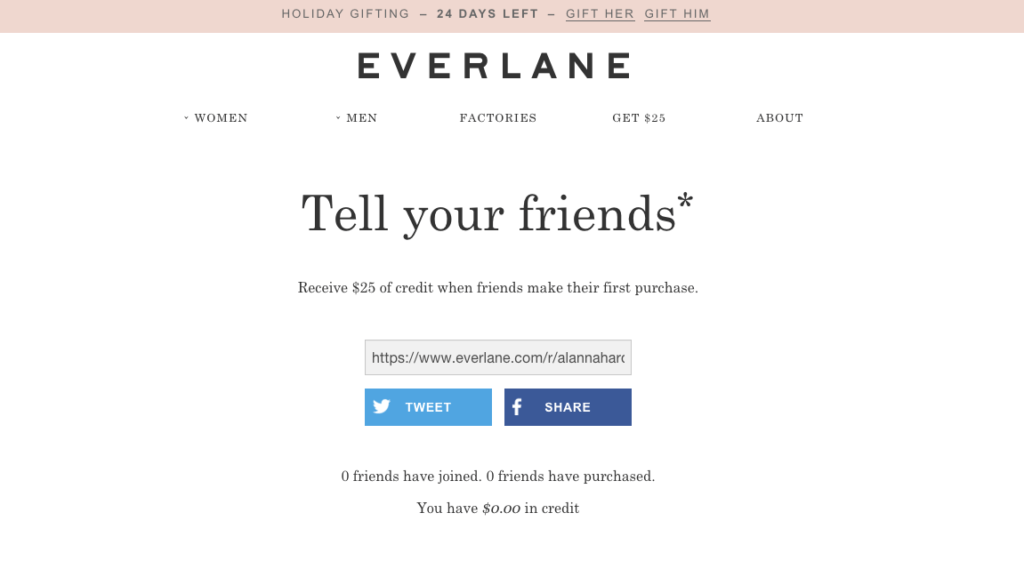
Use that force to drive both customer acquisition and conversions. Apps like ReferralCandy and Friendbuy are quick to install and easy to customize. Don’t be afraid to experiment with incentives for both sides of referrals. Word-of-mouth customers are four times more likely to buy and have a lifetime value 16 percent higher than average, so it pays to win them over any way you can.
Foster loyalty with a rewards program
The holidays are notorious for attracting one-time and single-item shoppers. So how do you turn seasonal customers into loyal, year-round customers? Next-visit coupons and follow-up emails might be good for luring a few people back to your store in January, but to get them committed for the long term, you need to think bigger picture.
Loyalty and rewards programs are an effective but underused tool in ecommerce. They act as a retention strategy, incentivizing shoppers to reduce their store-switching by offering them better long-term value. The best part: contrary to popular belief, they don’t take much time to establish, and they’re cheap to run.

The most common loyalty program is a simple points system, where customers earn points that can be redeemed for some sort of reward. A version of this approach is a tiered system that rewards initial loyalty with small offerings for being part of the program, then encourages customers to move up the “loyalty ladder” with more purchases. Alternately, some companies use VIP programs that extend exclusive benefits to participating customers—discounts, gifts, invites to special events—to keep in touch and stay in their good books.
Recapture lost business with shopping cart abandonment reminders
The rate of shopping cart abandonment in ecommerce is a staggering 68.5 percent. People abandon their carts for all kinds of reasons—because shipping costs are too high, because they don’t want to create an account, because they get distracted—but walking away from a cart once doesn’t mean the customer has to be lost forever.
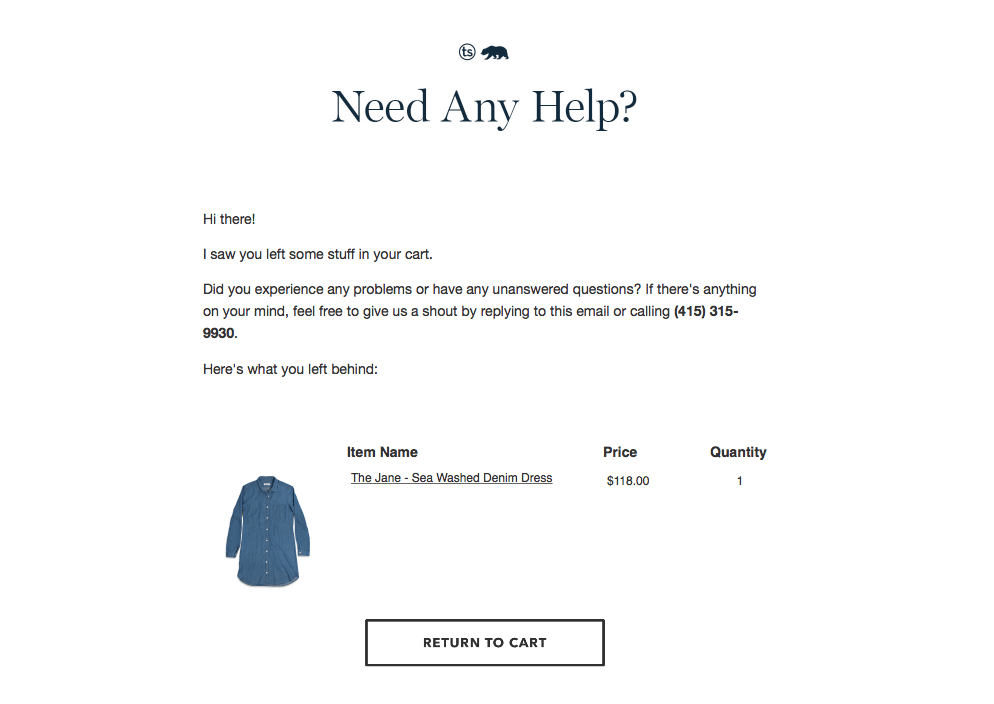
Cart abandonment reminders are an incredibly effective way of recapturing customers who have strayed from the checkout. According to a 2014 report from SalesCycle, nearly half of all reminder emails are opened, while nearly a third of clicks lead to a purchase. Still not convinced? Consider that each cart abandonment email sent translates to roughly $7 in revenue—not bad considering most cart abandonment apps are reasonably priced and require only a nominal time investment.
Use live chat to build trust and boost conversions
One of the (many) reasons shoppers abandon their carts is because they can’t immediately connect with someone who will answer their questions like a salesperson in a brick-and-mortar store. Twitter and email are great tools for providing support, but for customers they involve navigating away from your site, composing their question, and waiting for a response—not exactly ideal for keeping them focused on their purchase and engaged with your brand.

Instead, try integrating a live chat app like Bold Chat or Livezilla. Not only will it improve the chances of full shopping carts making it through the checkout, it gives your business an extra opportunity to provide personalized service, do a bit of light upselling, and, if you play your cards right, make a lasting, positive impression.
Give the people what they want
Most of us like being greeted by name when we enter a store, and we really like it when the store owner knows what we want—sometimes before we know it ourselves. This kind of personalized service is an anomaly in ecommerce, but not because it’s impossible. We do, after all, have the technology.
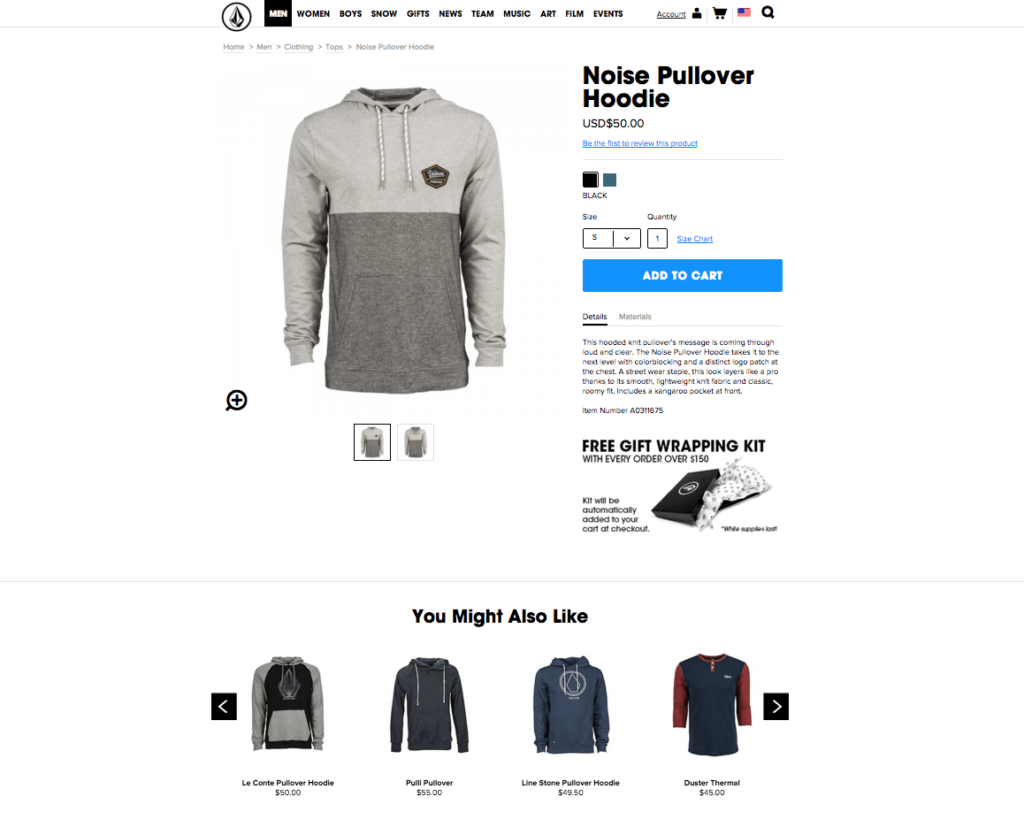
Apps like LimeSpot and Nosto analyze customer behaviour, attune to their likes and dislikes, and automatically recommend related, trending and recently viewed products via pop-ups, Facebook ads and emails. Early adopters of personalization software have seen substantial boosts to their bottom line. According to a recent eConsultancy survey, businesses that are personalizing web experiences are seeing an increase in sales of about 19 percent.
Improve the quality of your paid traffic
It’s a good idea to consider ramping up your paid advertising over the holidays—many businesses do—but if you’re not targeting your ads towards the people who deliver the best return on your investment, you might see a whole lot of traffic and very little revenue.
For all types of paid media, make sure you’re using niche keywords to capture shoppers with buying intent. For example, if you’re selling golf clubs, search terms like “Ping G30” (the brand and model) and “free shipping in Canada” are much better than “best golf driver.” Google Adwords’ Keyword Planner is a great tool for conducting keyword research and seeing how different search terms perform.
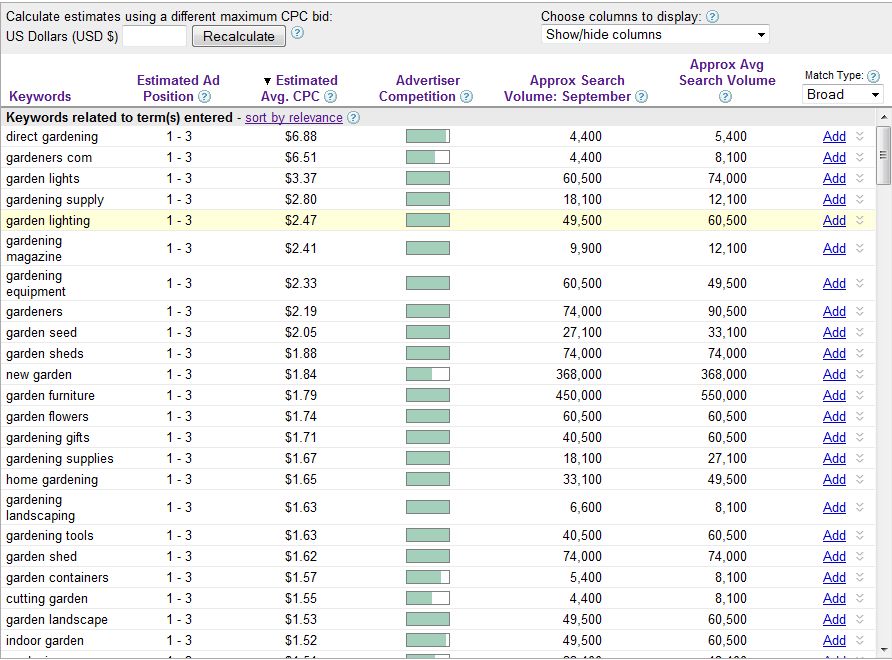
You’ll also learn a lot about ways to improve the quality of your paid traffic by keeping a close eye on your analytics. The easiest way to do this is by filtering traffic by channel in Google Analytics and calculating your RPV for each channel. If you’re paying to be featured in third-party emails, blogs, gift guides or other promotions, double-check the RPV for these channels and assess whether they’re worth another investment next year.
Closing thoughts
RPV has been called “deceptively simple” because it’s extremely easy to calculate but packs a lot of insight. If you ask us, it’s one of the most compelling indicators of store success.
The holidays are a great time to start calculating and tracking RPV, and the ideas we shared in this post should help you steadily improve yours. By keeping an eye on changes in your RPV, you’ll gain key insights into which sales strategies are working for your store and which ones aren’t. Use that information as you plan for 2016, and you should be in for a good year.